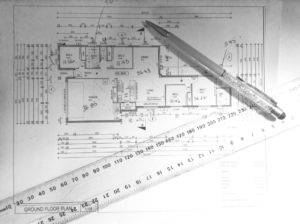Commercial Energy Assessments can be completed in two main ways, which we have detailed in a previous article.
With Deemed to Satisfy Assessments, also known as Section J Reports, there is the requirement to assess not only the internal lighting to ensure it meets energy efficiency standards, but also the external lighting. When obtaining a Section J Report, clients need to ensure they choose an Energy Assessor who both understands and reports on this area.
What is the objective?
The aim is to minimise power consumption of lighting installations by ensuring energy smart products and practices are used.
What is required?
Like much of the National Construction Code, the NCC 2017 provides a lot of common sense solutions for compliance.
To ensure energy is not wasted in exterior lighting, Section J6.5 requires that artificial lighting around the perimeter of a building must be controlled by a daylight sensor or a time switch that is capable of switching on and off electric power to the system at variable pre-programmed times and on variable pre-programmed days. This ensures that exterior lights are not left on all day and night, and instead are only using energy when they are required.
Furthermore, when the total perimeter lighting load exceeds 100 W, the exterior lighting must have an average light source efficacy of not less than 60 Lumens/W, or be controlled by a motion detector in accordance with Specification J6. Given a fairly standard LED exterior floodlight can use 24W, it is very easy to exceed this 100W load for perimeter lighting around a commercial building. For example, 5 x 24W floodlights would exceed this 100W load limit. In this case, the lights would need to be controlled by a motion detector or have a minimum light source efficacy of 60Lumens/W.
Light source efficacy means the luminous flux of a lamp or the total radiant flux in the visible spectrum weighted by the spectral response of the eye, divided by the electric power that will be consumed by the lamp (but excluding ballast and control gear power losses). Most modern low-energy lights would comply. For example, a standard LED floodlight which emits 1400 lumens and uses 24 Watts would have a Light source efficacy of 1400/24 = 58 Lummens/W.
Note that decorative lighting (including facade lighting and signage lighting) needs to have a separate time switch to the general exterior lighting. This is to ensure that lighting that does not need to be on as long as decorative lighting can be set to switch off earlier. For example, path lighting may switch off at 10pm, but the decorative lighting stay on until 6am.
What lights are included?
NCC 2017 Section J 6.5 precribes energy efficient lighting ‘around the perimeter of a building’. This would therefore include any facade lighting or sign lighting, as well as any lights fixed to the building that light up the area around the building, such as lights that illuminate pathways and gardens.
It is unclear from the legislation as to whether ‘around the perimeter’ includes lights that are not attached to the building, such as garden up-lights, or lighting on other structures such as fences. However, it is good practice to ensure that these lights comply with the requirements of Section J, as they are not onerous, and will lead to lower energy bills for the business occupying the premises.
As is the case with internal lighting, Emergency Lighting is exempt from these provisions.
Where to obtain a Section J Report
Contact BERA to discuss your project and obtain a free quote.

